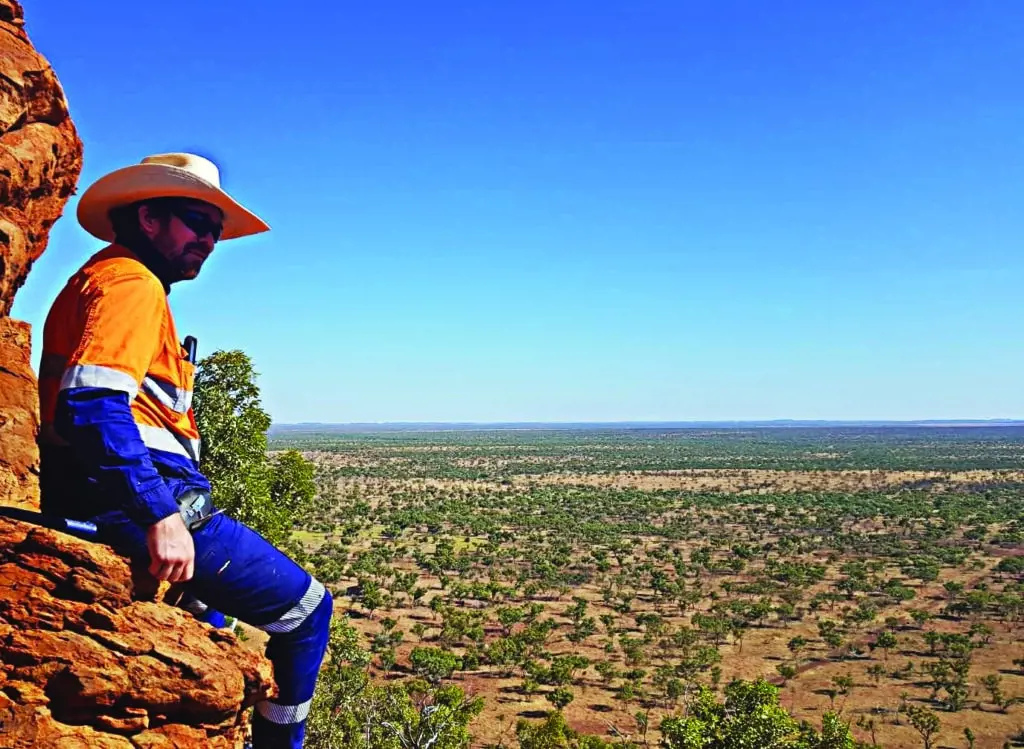SRK Consulting is tackling the age-old practice of mineral exploration through a new lens, where machine learning underpins new ways of prospectivity modelling.
As artificial intelligence (AI) changes the way the world operates, machine learning is becoming an increasingly prominent methodology and practice in mining and industrial sectors.
Machine learning is being embraced by major mining companies as they look to gain an operational edge, but it is also supporting greenfields and brownfields projects as a way of improving prospectivity modelling in mineral exploration.
As a data-diverse industry, mineral exploration offers significant opportunities for machine learning to not only accelerate data analysis of assay results but also remove human bias from the practice.
Data is ingested into a computing platform and machine learning applies algorithms to establish, or ‘learn’, patterns in the data, enabling it to make predictions to support future drill programs and exploration. It does this in a fraction of the time it would take a geologist to investigate the data and make their own estimations.
Leading international mining consultancy firm SRK has been an early adopter of machine learning when it is applied to mineral exploration, having established a keen interest in the emerging technology through SRK senior structural geologist Antoine Caté.
Caté participated in a series of crowdsourcing exploration competitions, including the Integra Gold Rush Challenge in 2016 which invited geologists and data scientists to crunch decades’ worth of exploration data and produce targets at Integra’s Lamaque project in Val-d’Or, Québec. A $C1 million prize pool was on offer.
OZ Minerals launched its own Explorer Challenge in 2019 involving a $1 million prize pool for those who could develop novel exploration approaches at a site near the Prominent Hill copper-gold mine in South Australia.
The common theme between these competitions was the provision of data. Each of the participating companies had immense catalogues of data at their disposal to allow for new exploration approaches and innovations.
Enter geologists and data scientists from across the world, and soon enough the concept of machine learning in exploration was taking hold.
SRK principal geologist Mark Rieuwers said the company’s Canada and Australia offices came together when OZ Minerals’ Explorer Challenge took place, with Rieuwers and his team complementing Caté’s team’s machine learning expertise with local geological knowledge.
“OZ Minerals put up most of their data on public domain. People would go register and come up with new data-driven targets using various approaches,” Rieuwers told Australian Mining.
“Antoine was crunching the machine learning side of things, and we found this particular exercise involved an iron oxide copper-gold (IOCG) style of exploration, which myself and some others in the Australia offices had quite a bit of experience in, particularly with South Australian geology.
“From that, we developed an integrated workflow (between Canada and Australia) which we’ve adopted for quite a few different projects since.
“We’ve combined the data-driven machine learning-based approaches with knowledge-driven geological reinterpretation to be incorporated into a new framework of thinking.”
SRK’s approach is unique in that it attempts to create feedback loops by pairing the smarts of machine learning with the domain expertise of its geologists.
“Knowledge-driven prospectivity modelling is quite a different philosophy,” Rieuwers said.
“Here, you don’t need any known deposits or training sites for the machine learning algorithm to do its thing, you simply need some concepts and combine these with traditional algorithms and formulas.
“That’s one advantage (of knowledge-driven interpretations); you can be in a greenfields environment where there aren’t many known deposit types of the ones you’re looking for and still be able to make an assessment.
“Machine learning requires training sites, which are known deposits of a particular type preferably in your area of exploration interest.
“If you’ve got a lot of training sites in a very data-rich environment, it’s well suited to machine learning. If you don’t, having that feedback between knowledge-driven methods and machine learning is quite powerful.”

